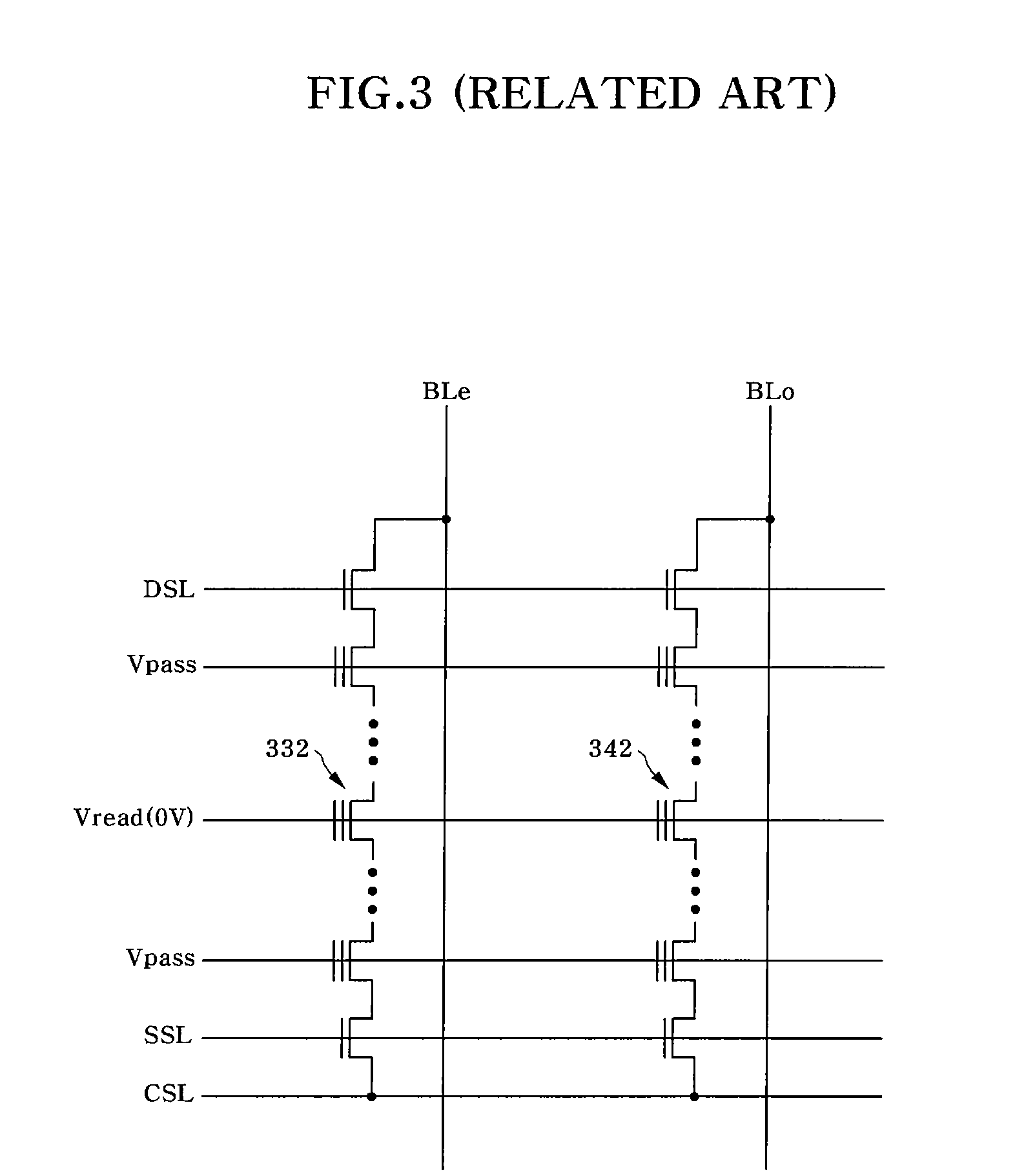Method for reading NAND flash memory device using self-boosting
- Summary
- Abstract
- Description
- Claims
- Application Information
AI Technical Summary
Benefits of technology
Problems solved by technology
Method used
Image
Examples
Embodiment Construction
[0029]Embodiments of the present invention will now be described in detail with reference to the accompanying drawings. The embodiments of the present invention may be modified into various other forms and the scope of the present invention should not be construed as limited by the embodiments described below.
[0030]FIG. 4 illustrates a string structure of a NAND flash memory device to explain a method for reading a NAND flash memory device according to the present invention. As shown in FIG. 4, the NAND flash memory device has a memory cell array as a storage area to store data. The memory cell array includes a plurality of cell strings 410 and 420 that are connected to corresponding bit lines BLe and BLo. Of course, a number of cell strings are arranged in the memory cell array although only two cell strings 410 and 420 are shown in FIG. 4. Each of the cell strings 410 / 420 includes a string selection transistor 411 / 421 connected to a bit line BLe / BLo, a source selection transistor ...
PUM
 Login to View More
Login to View More Abstract
Description
Claims
Application Information
 Login to View More
Login to View More - R&D
- Intellectual Property
- Life Sciences
- Materials
- Tech Scout
- Unparalleled Data Quality
- Higher Quality Content
- 60% Fewer Hallucinations
Browse by: Latest US Patents, China's latest patents, Technical Efficacy Thesaurus, Application Domain, Technology Topic, Popular Technical Reports.
© 2025 PatSnap. All rights reserved.Legal|Privacy policy|Modern Slavery Act Transparency Statement|Sitemap|About US| Contact US: help@patsnap.com



